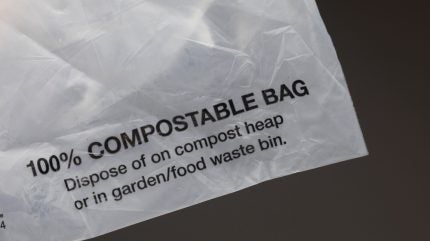
In recent years, compostable packaging has emerged as a promising alternative to conventional plastics. With global awareness of environmental degradation on the rise, industries and consumers alike are turning towards sustainable solutions.
Compostable materials are often hailed as the future of packaging, but is the world truly ready to embrace them on a mass scale?

Discover B2B Marketing That Performs
Combine business intelligence and editorial excellence to reach engaged professionals across 36 leading media platforms.
The answer is complex, involving a blend of scientific, economic and logistical considerations.
Compostable packaging refers to materials that can break down into non-toxic components under specific composting conditions, ultimately becoming part of nutrient-rich soil.
While the concept is appealing, widespread implementation involves more than swapping plastic for plant-based wrappers. It requires systemic changes in infrastructure, policy, and consumer behaviour.
Understanding compostable materials
Compostable packaging is typically made from natural materials such as cornstarch, polylactic acid (PLA), bagasse (a sugarcane by-product), or mushroom mycelium.

US Tariffs are shifting - will you react or anticipate?
Don’t let policy changes catch you off guard. Stay proactive with real-time data and expert analysis.
By GlobalDataUnlike traditional plastics derived from fossil fuels, these substances can decompose within 90 to 180 days in industrial composting facilities under controlled conditions of heat, moisture and microbial activity.
In contrast, standard plastics can take hundreds of years to break down, releasing microplastics and toxic substances in the process.
There is, however, an important distinction between ‘biodegradable’ and ‘compostable’. All compostable materials are biodegradable, but not all biodegradable items meet the stringent criteria to be certified compostable. Many so-called biodegradable products only fragment into smaller particles, often under undefined conditions, leaving behind harmful residues.
Certified compostable packaging, on the other hand, is designed to leave no toxic trace and to break down into water, carbon dioxide, and biomass.
Leading certification bodies such as the European standard EN 13432 and the British PAS 100 ensure that compostable materials meet rigorous environmental criteria. Yet, confusion in labelling persists, and consumers often struggle to identify genuinely compostable items or understand how to dispose of them correctly.
The infrastructure challenge
One of the biggest hurdles to mass adoption of compostable packaging lies not in its development, but in the infrastructure required to process it effectively. Industrial composting facilities are not universally available, and curbside compost collection is still relatively uncommon in many regions.
Without access to suitable composting systems, even the most environmentally friendly packaging can end up in landfill, where it fails to break down as intended due to lack of oxygen and microbial activity.
Home composting, while more accessible, is not always sufficient to handle thicker or more complex compostable materials. Packaging designed for industrial composting may require sustained high temperatures and specific humidity levels that domestic compost heaps cannot consistently provide.
This gap between production and end-of-life treatment limits the actual environmental benefits of compostable packaging.
Moreover, contamination remains a serious issue. Composting facilities often reject entire batches of waste if non-compostable plastics are mixed in, which is a frequent occurrence due to consumer confusion.
This creates an operational headache for waste managers and reduces confidence in compostable solutions.
Governments and local councils have a vital role to play here. Policies that incentivise the development of composting infrastructure, standardise labelling, and educate the public are essential.
Countries like Germany and the Netherlands are making headway with integrated waste systems and clear disposal guidelines, but a global standard is still lacking.
Economics and scalability
From a business perspective, compostable packaging presents both opportunities and challenges. Consumers are increasingly demanding eco-conscious products, and brands that adopt sustainable packaging can boost their image and appeal.
However, the costs associated with compostable alternatives remain higher than those of traditional plastic, particularly at scale.
Production of compostable materials often involves agricultural inputs such as maize or sugarcane, which can fluctuate in price due to seasonal changes, competition with food crops, and global market trends. These factors make it harder for businesses, especially smaller ones, to commit to compostable packaging on a long-term basis.
That said, innovation and investment are driving costs down. Start-ups and established manufacturers alike are exploring novel materials such as seaweed, algae, and food waste by-products, which could be cheaper and more sustainable sources in the future.
As production technologies mature and demand increases, economies of scale are expected to improve affordability.
Some large corporations have already begun to make the switch. Multinationals like Nestlé and Unilever have piloted compostable wrappers, while coffee chains such as Pret a Manger have rolled out compostable cups and cutlery in selected markets.
These moves suggest a growing willingness to explore viable alternatives, though many initiatives are still in the experimental phase.
The road ahead
Compostable packaging holds real potential to reduce plastic pollution and create a more circular economy. However, realising this potential requires more than enthusiastic adoption by a few forward-thinking brands.
It demands coordinated action across the supply chain—from raw material producers and manufacturers to waste collectors, policymakers, and consumers.
Consumer education is particularly critical. People need to understand what compostable packaging is, how to distinguish it from imposters, and how to dispose of it responsibly. Without this knowledge, even well-designed systems can falter.
In the long term, compostable packaging is unlikely to be a one-size-fits-all solution. It will form part of a wider toolkit that includes reusable containers, recyclable materials, and reduced consumption overall.
The success of any one approach depends on how it integrates with broader sustainability goals and infrastructural realities.
Ultimately, compostable packaging is not yet fully ready for mass use, but it is heading in the right direction.
With continued investment, policy support and consumer engagement, it could play a pivotal role in reducing the environmental footprint of modern packaging.





